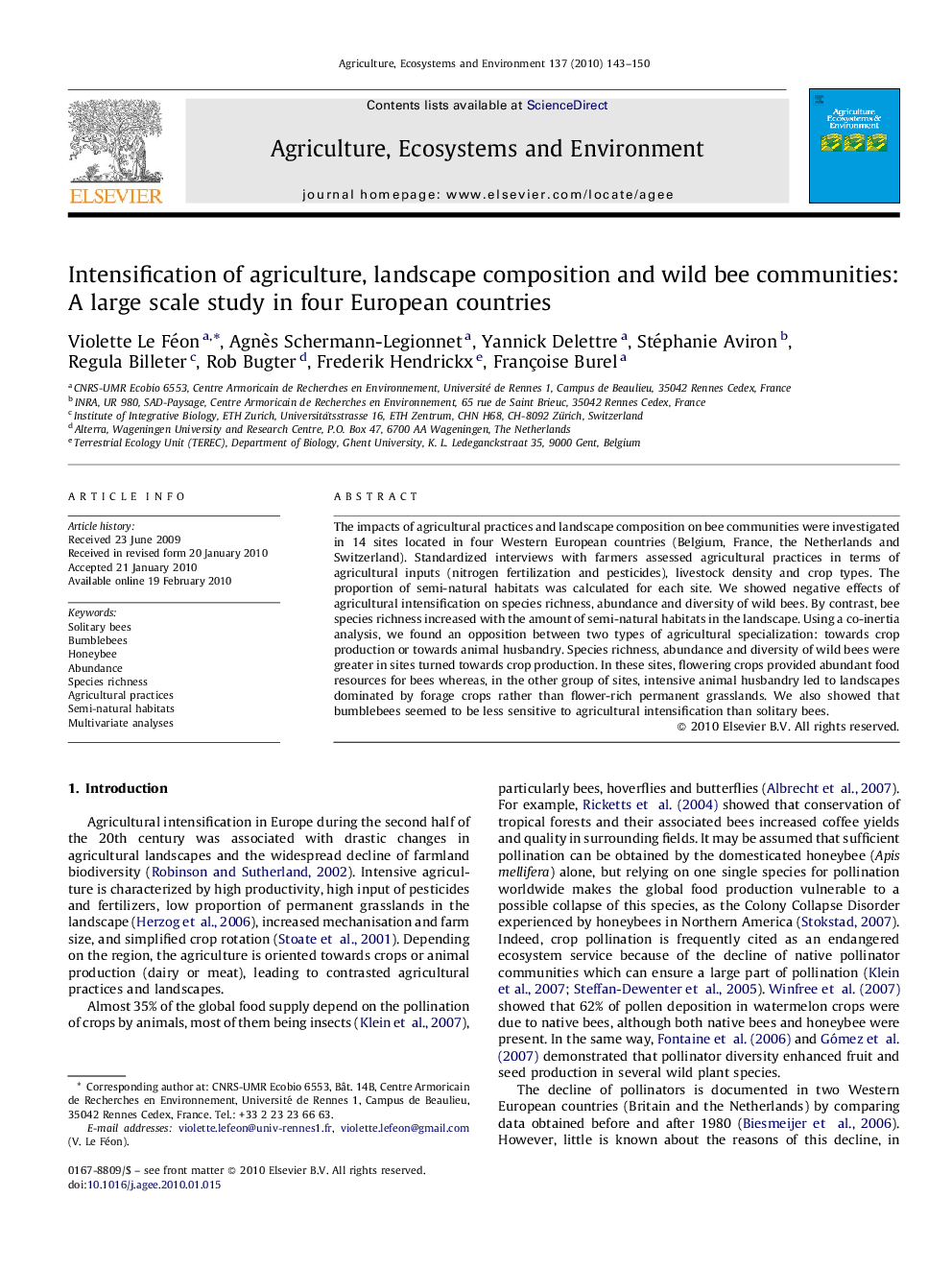| Article ID | Journal | Published Year | Pages | File Type |
|---|---|---|---|---|
| 2415005 | Agriculture, Ecosystems & Environment | 2010 | 8 Pages |
The impacts of agricultural practices and landscape composition on bee communities were investigated in 14 sites located in four Western European countries (Belgium, France, the Netherlands and Switzerland). Standardized interviews with farmers assessed agricultural practices in terms of agricultural inputs (nitrogen fertilization and pesticides), livestock density and crop types. The proportion of semi-natural habitats was calculated for each site. We showed negative effects of agricultural intensification on species richness, abundance and diversity of wild bees. By contrast, bee species richness increased with the amount of semi-natural habitats in the landscape. Using a co-inertia analysis, we found an opposition between two types of agricultural specialization: towards crop production or towards animal husbandry. Species richness, abundance and diversity of wild bees were greater in sites turned towards crop production. In these sites, flowering crops provided abundant food resources for bees whereas, in the other group of sites, intensive animal husbandry led to landscapes dominated by forage crops rather than flower-rich permanent grasslands. We also showed that bumblebees seemed to be less sensitive to agricultural intensification than solitary bees.
